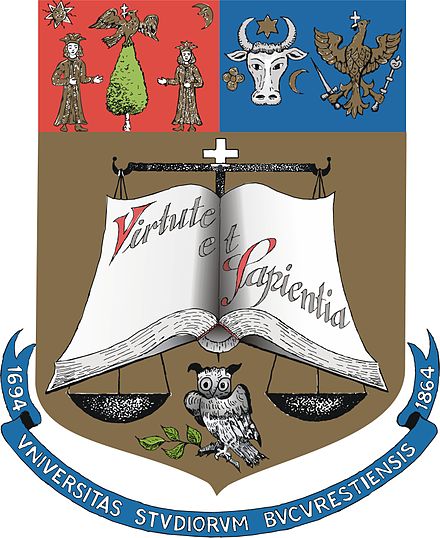Location
The University of Bucharest (Romanian: Universitatea din București), commonly known after its abbreviation UB in Romania, is a public university founded in 1864 by decree of Prince Alexandru Ioan Cuza to convert the former Saint Sava Academy into the current University of Bucharest, making it the second oldest modern university in Romania. It is one of the five members of the Universitaria Consortium (the group of elite Romanian universities).
The University of Bucharest offers study programmes in Romanian and English and is classified as an advanced research and education university by the Ministry of Education. In the 2012 QS World University Rankings, it was included in the top 700 universities of the world, together with three other Romanian universities.
Source: Wikipedia (consulted d.d. February 21st 2018)
Members:
Resources
Displaying 1 - 5 of 9ECONOMIC MEASUREMENT OF OPTIMAL CITY SIZE: THE CASE OF WEST SUMATRA, INDONESIA
This is an empirical study of economic measurement of the optimal size of
seven cities in West Sumatra region, Indonesia. The empirical findings are quite interesting
since the calculated optimal city size does not result in a single measure as mostly
previous studies found, but they vary in accordance with the economic approaches used.
The optimal city size measured by using the maximum profit approach would have been
larger in size compared to those measured by the minimum cost and maximum net benefit
BROWNFIELDS REGENERATION, BETWEEN SUSTAINABLE URBAN DEVELOPMENT AND CULTURAL HERITAGE. THE FORMER MILITARY SITES IN ORADEA, ROMANIA
The post-Cold War conditions, following the collapse of the USSR, brought radical socio-economic changes in Central and Eastern Europe, including the process of military restructuring – a process of military relocation, which resulted in huge amounts of under-used land. Many regions are facing development dilemmas while experiencing demilitarization transformations, as the process has left behind in many cities large areas of abandoned and potentially contaminated tracts of land.
THE URBAN BUBBLE PROCESS IN SPAIN: AN INTERPRETATION FROM THE THEORY OF THE CIRCUITS OF CAPITAL
Urbanization in Spain has advanced rapidly in the last twenty years or so. The phenomenon was particularly pronounced in the period spanning 1990-2007, when the construction of housing on a mass scale was a clear indicator of the second circuit of capital accumulation, with space playing a key role through the work of David Harvey. This led to a property bubble – one of the defining features of the economic and financial crisis in Spain between 2008 and 2013.
Urban Footprint of Mumbai - The Commercial Capital of India
Urban footprint refers to the proportion of paved surface (built up, roads, etc.) with the reduction of other land use types in a region. Rapid increase in the urban areas is the major driver in landscape dynamics with the significant erosion in the quality and quantity of the natural ecosystems. The urban expansion process hence needs to be monitored, quantified and understood for effective planning and the sustainable management of natural resources.
The Association between Land-Use Distribution and Residential Patterns: the Case of Mixed Arab-Jewish Cities in Israel
The emergence of GIS and the availability of high resolution geographic data have improved our ability to investigate the residential segregation in cities and to identify the temporal changes of the spatial phenomena. Using GIS, we have quantitatively and visually analyzed the correspondence between land-use distribution and Arab residential patterns and their changes in the period between 1983 and 2008 in five mixed Arab-Jewish Israeli cities. Results show a correspondence between the dynamics of Arab/Jewish residential patterns and the spatial distribution of various land-uses.


